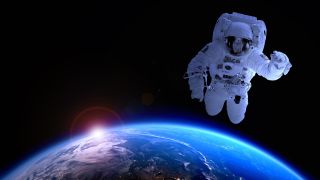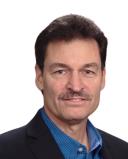Near-Death Experiences
Near-Death Experiences and the Overview Effect
What can we learn from these near-death experiences?
Updated August 23, 2024 Reviewed by Davia Sills
Key points
- Near-death experiences often result in transformative after-effects.
- Astronauts who venture into space describe a profound transformative experience known as the overview effect.
- The after-effects of near-death experiences share many transformative features with the overview effect.
- A close brush with death and a journey into space can both result in profound healing.

Co-written with Dr. Charles Dukes
What do people who almost die and astronauts who travel into space have in common?
Both experience a profound shift in perspective that catalyzes lasting changes in their lives. How do such disparate experiences result in such common aftereffects? We may find an answer to this question by examining near-death experiences and the overview effect.
Near-death experiences
Psychiatrist Raymond Moody first coined the term “near-death experience” (NDE) in his 1975 book Life After Life. Moody described common elements shared by individuals who experienced a close brush with death. These include:
1. Ineffability — an inability to describe the experience in words
2. Hearing the news — hearing someone pronounce them dead
3. Feelings of peace and quiet — extremely pleasant feelings and sensations
4. The noise — auditory sensations such as a buzzing or music
5. The tunnel — a sensation of being pulled through a dark space, such as a tunnel or void
6. Out-of-body experience — the experience of being outside of one’s own body
7. Meeting others — contacting deceased loved ones or spiritual beings
8. A being of light — an encounter with a being of light which communicates with them and may tell them they have to return to their physical body
9. Life review — seeing one’s entire life displayed before them
10. A border or limit — a border such as a body of water or a fence across a field may be approached
11. Coming back — many do not want to return to their physical body, but they feel drawn back by some unknown force
12. Telling others — after returning to their physical body and regaining consciousness, many people tell others about their experience; however, if they are not understood, they may subsequently remain silent
NDE aftereffects
Moody goes on to describe changes that occur in people after their NDE. These may include a shift in attitude toward their physical life, enhanced intuition, a desire to cultivate love for others, an increased desire to acquire knowledge, and a reduced fear of death.
Dr. Bruce Greyson, Professor Emeritus of Psychiatry and Neurobehavioral Sciences at the University of Virginia, is one of the world’s leading researchers on near-death experiences (NDEs). In his book After: A Doctor Explores What Near-Death Experiences Reveal About Life and Beyond, Greyson describes additional aftereffects of NDEs. Greyson found that 90 percent of NDErs report a change in their attitudes and beliefs as a result of their NDE, and in more than half, the NDE aftereffects continue to increase with time.
These aftereffects can include feeling that the NDE experience is “more real” than their everyday physical experience, changes in their perception of self and their relationship to others, and a shift in their attitudes toward life. They increasingly believe in life after death, feel loved by a higher power, and experience increased self-esteem and a new sense of purpose or mission. Generally, experiencers return with a feeling that we are all part of something bigger.
The Overview Effect
The overview effect is a profound experience that astronauts describe when they view the Earth from space. In his book The Overview Effect: Space Exploration and Human Evolution, Frank White describes a cognitive shift in awareness as a result of seeing the Earth as a tiny, fragile ball of life in space that may transform an astronaut’s perspective of the planet and humanity’s place in the universe.
Space is an inherently hostile environment for a human being. One of the veteran astronauts I (Dr. Dukes) had the privilege to work with said when you arrive in orbit, you are like a child again. You have to learn how to walk, how to use the toilet, and how to eat. When I work with astronauts, I am struck by their accounts of being in space and curious about what they miss about the Earth.
We often think of astronauts as larger-than-life, unflappable, intrepid explorers. However, when they venture beyond the bounds of our planet, they become very much aware of the fragility of life. In the black void of space, the Earth hangs like a shining blue jewel that sustains and nurtures all of humanity uniquely among the stars.
It also is profoundly impactful when I hear crewmembers speak about elements of nature that we, “earthlings,” tend to take for granted, like the feel of the wind on our face or rain on our skin. These seemingly trivial things are profoundly missed by astronauts confined to small living spaces for extended periods of time.
Similar to near-death experiencers, astronauts who experience the overview effect describe lasting changes that include:
1. A sense of connectedness to humanity and the global community with a loss of physical and political barriers that tend to separate humans
2. A greater appreciation for the Earth and a desire to become more involved in the care of the Earth
3. An appreciation of the uniqueness, fragility, and preciousness of the Earth amongst the stars
4. A sense of heightened spirituality
So why is it that astronauts who travel into space and people who come close to death share common aftereffects of their experiences? Is the psychological impact of such experiences responsible, or is there something inherently transformative in such experiences?
At this time, it is not known, but as the human race prepares to venture further into space and advancing medical technology improves our odds of resuscitation following life-threatening events, perhaps we would be wise to begin exploring these changes in order to learn how best to manage these transformations. Furthermore, at this point in history, when humans have become increasingly polarized due to differences in political or religious ideologies, such a transformative change in perspective could indeed provide healing.

Dr. Charles Dukes is an aerospace psychiatrist who has worked with NASA's behavioral health and performance group at Johnson Space Center. He is currently a Clinical Associate Professor of Psychiatry at the University of Oklahoma and an FAA Federal Air Surgeon Psychiatric Consultant.
References
Moody, Raymond A. Life after life. Mockingbird, 1975.
Greyson, Bruce. After: A doctor explores what near-death experiences reveal about life and beyond. Random House, 2021.
White, Frank. The overview effect: Space exploration and human evolution. AIAA, 1998.




